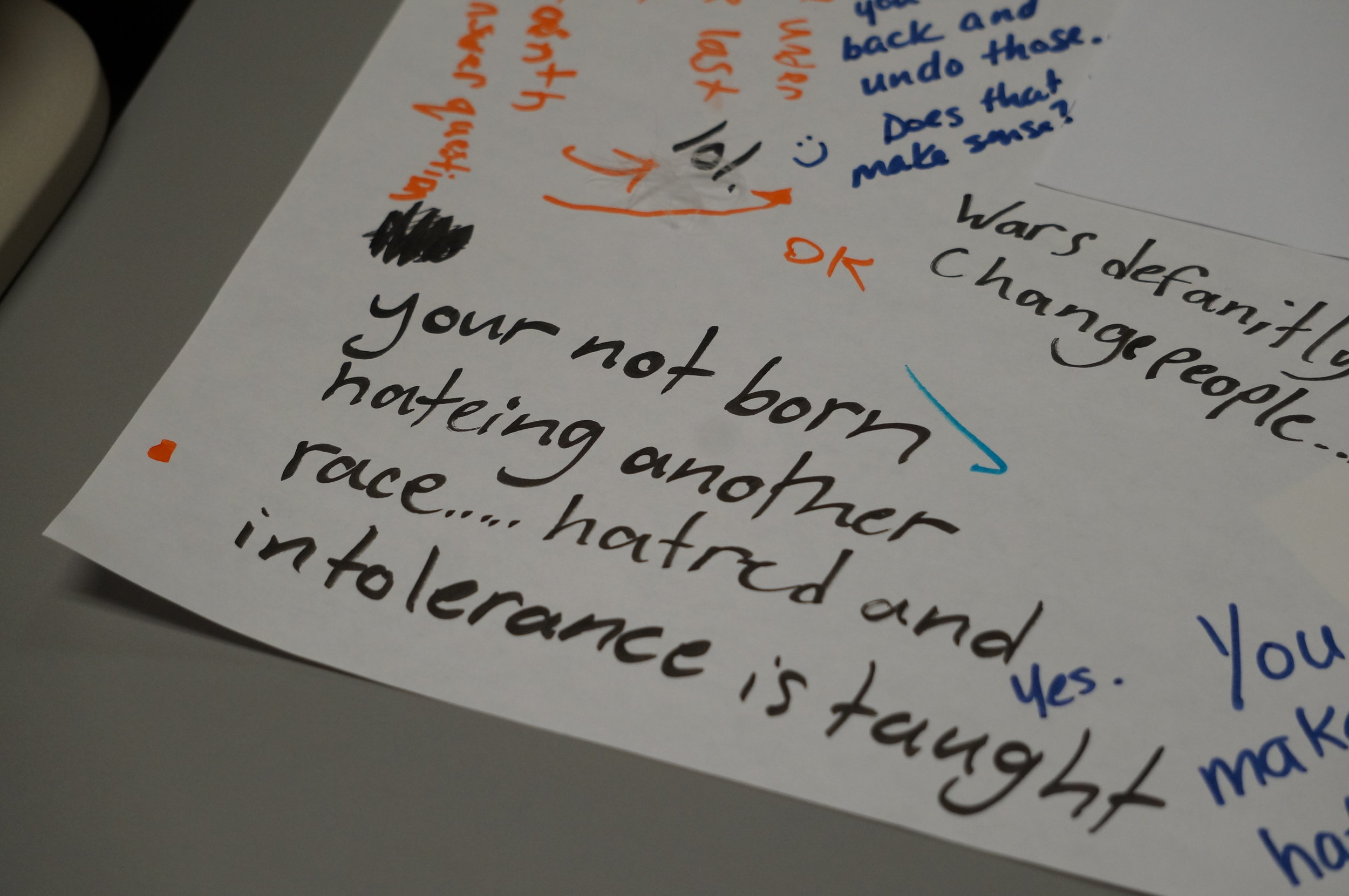Big Paper
How can educators invite students into difficult conversations?
What happens when we slow down, think through our ideas, and reflect on and respond to others’ perspectives through writing?
By: Rob Simon
At the start of each year of the Addressing Injustices Project, we bring middle school students together with teacher candidates who haven’t met previously. We each have read a shared text—Maus or Beautiful Music for Ugly Children or Fahrenheit 451—but many of us are understandably reticent. Rather than regard students’ different levels of comfort with speaking in class or their preference for silence as a problem, we use Big Paper to level the playing field and invite everyone—adults and youth—to participate in a silent conversation through writing.
Silence is critical: It changes how we feel in the classroom, takes the focus off any one person or one idea, and helps create the conditions for everyone to read, sit with their ideas, and respond to others. Learning to sit with questions without rushing to resolve them is an important part of exploring complex issues that impact each of us in different ways.
“Learning to sit with questions without rushing to resolve them is an important part of exploring complex issues that impact each of us in different ways.”
Students and teachers respond to Art Spiegelman’s Maus
After settling everyone into groups, the teaching-researching team hands out large chart paper including book excerpts or relevant extra-textual sources and images, along with pens and markers. We circulate papers to give everyone a chance to respond. We then give everyone sticky notes in as many different colors as we can find, which we all use to add our responses during a gallery walk. This adds additional layers to our collective conversation.
Big Paper allows us to create a visual record of our initial reactions, feelings, and questions. This is helpful in our research process. It also helps our teaching. Questions from Big Paper stay with us. We return to them throughout our time together—they shape our interpretations of the books we read and inform our critical and creative choices.
Additional Resources
Facing History and Ourselves
We learned about Big Paper in our work with Facing History over many years. The Facing History and Ourselves website has numerous resources and examples of how to use big paper in the classroom: https://www.facinghistory.org/resource-library/teaching-strategies/big-paper-silent-conversation

